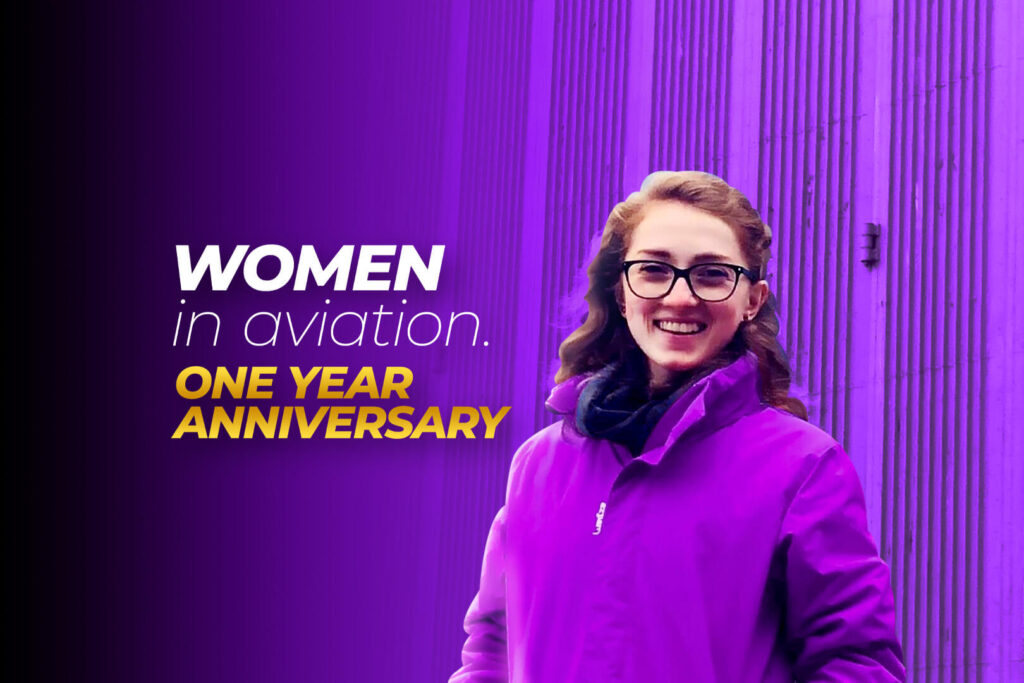Did you know that female professionals have been involved in aerospace engineering for almost 100 years?
Elizabeth Muriel Gregory “Elsie” MacGill was the first woman in the world to earn an aeronautical engineering degree in 1929. MacGill headed up mass production of the Hawker Hurricane, an aircraft instrumental in the Battle of Britain. Later, she became known as the “Queen of the Hurricanes”.
This was a groundbreaking step for women who aspired to work in the aviation engineering sector. So, why are there still so few women working as aerospace engineers in the United States today?
To mark International Women’s Day (March 8) and the one-year anniversary of our Women in Aviation campaign, AeroTime takes a look at the latest recorded figures of female aerospace engineers across the US.
Certified airframe mechanic Mercedes Oliver said International Women’s Day is a chance to set an example for girls and younger women.
“During a conversation with AeroTime Aviation Award recipient Tammera L Holmes at the Aviation Institute of Maintenance in Chicago, Mercedes said: “I want to show younger girls and younger women that we all have an important role to play. And that we can achieve the goals we want – the big goals and big dreams and the big hopes.”
As part of our Women in Aviation campaign, we will keep publishing content until March 15, 2022.
Female aerospace engineers continue to be vastly underrepresented
In aviation, the number of female professionals in roles such as pilots, air traffic controllers, and engineers, shows that the industry is far from achieving gender equality. This imbalance also exists at a senior management level across many aviation and aerospace companies.
In 2016, aerospace engineering had one of the lowest proportions of women among all engineering disciplines, fourth only behind computer, mechanical, and electrical engineering, according to ‘The Effect of Generation on Retention of Women Engineers in Aerospace and Industry’ by Kiernan, Kristine Maria.
The US Bureau of Labor Statistics listed the percentage of women aerospace engineers in 2016 at just 7.8%.
By 2018, that figure had almost doubled to 13.4%, according to the 2019 edition of Women in Aviation: A Workforce Report.
However, the 2021 edition of ‘Women in Aviation: A Workforce Report’ revealed that only 12.6% of women worked as aerospace engineers in 2020.
“The results reveal specific areas that urgently require additional emphasis include pilots, maintenance technicians, aerospace engineers, dispatchers, airport managers, air traffic controllers, and a continued focus on the need for women in aviation leadership positions,” comments Rebecca Lutte, author of the report.
In a recent report titled ‘Aerospace Engineer and Demographic Statistics 2022’, career research company, Zippia revealed that 12.5% of all aerospace engineers in 2021 were women, while 82.7% were men. Besides the gender imbalance in the workplace, the report reveals the gender pay gap that exists between male and female aerospace engineers.
“In 2021, women earned 94% of what men earned,” Zippia discovered.
Thus, the results of many reports reveal that little progress has been made in increasing female representation in the aerospace engineering sector. In some cases, female representation had even decreased.
What are the factors…
According to the 2021 edition of ‘Women in Aviation: A Workforce Report’, key factors contributing to the underrepresentation of women in aviation, including aerospace engineering, involve negative workplace culture (including discrimination and sexual harassment), as well as challenges disproportionately faced by women when navigating a work/life/family balance.
In addition, the reports cite a lack of women in leadership positions and says there is a need for increased youth outreach, as well as for leadership commitment to diversity and inclusion.
“For the industry to gain the benefits of broad representation in the aviation workforce and meet the workforce needs of the future, we simply must address the identified barriers and create change,” the report states.
…and what can be done?
Elisabeta Zahariade, a junior LMCC (Line Maintenance Control Centre) engineer at FL Technics, encourages women and girls who aspire to become aerospace engineers to reach for their dreams, and work to overcome any difficulties they might encounter along the way.
“Study and never stop being curious. Always focus on yourself, not on what other people are doing. The aviation industry, even though it is all about flying, has a way of bringing people ‘down to earth’ really fast,” Elisabeta told AeroTime.
When Elisabeta was first accepted into FL Technics, she was the only female engineer working inside the aircraft hangar.
“Naturally, I was anxious and didn’t know what to expect,” Elisabeta said. “Now, I guess me, and guys have grown accustomed to each other
“Fortunately, I am not the only woman in our station now, there is another, and she is a wonderful B1 engineer.”
Meanwhile, Tammera L Holmes’ The AeroStar Avion Institute, which aims to promote access to jobs in aviation and aerospace, has helped Mercedes take up a new role as an instructor, teaching aviation to children. Mercedes revealed that this outreach as an instructor was crucial to her being able to reach the younger generation.
“It’s so important for us to get involved with them and to teach them and to show them that you also can be in my position. And that you can get here through hard work and diligence and resilience,” Mercedes said.
